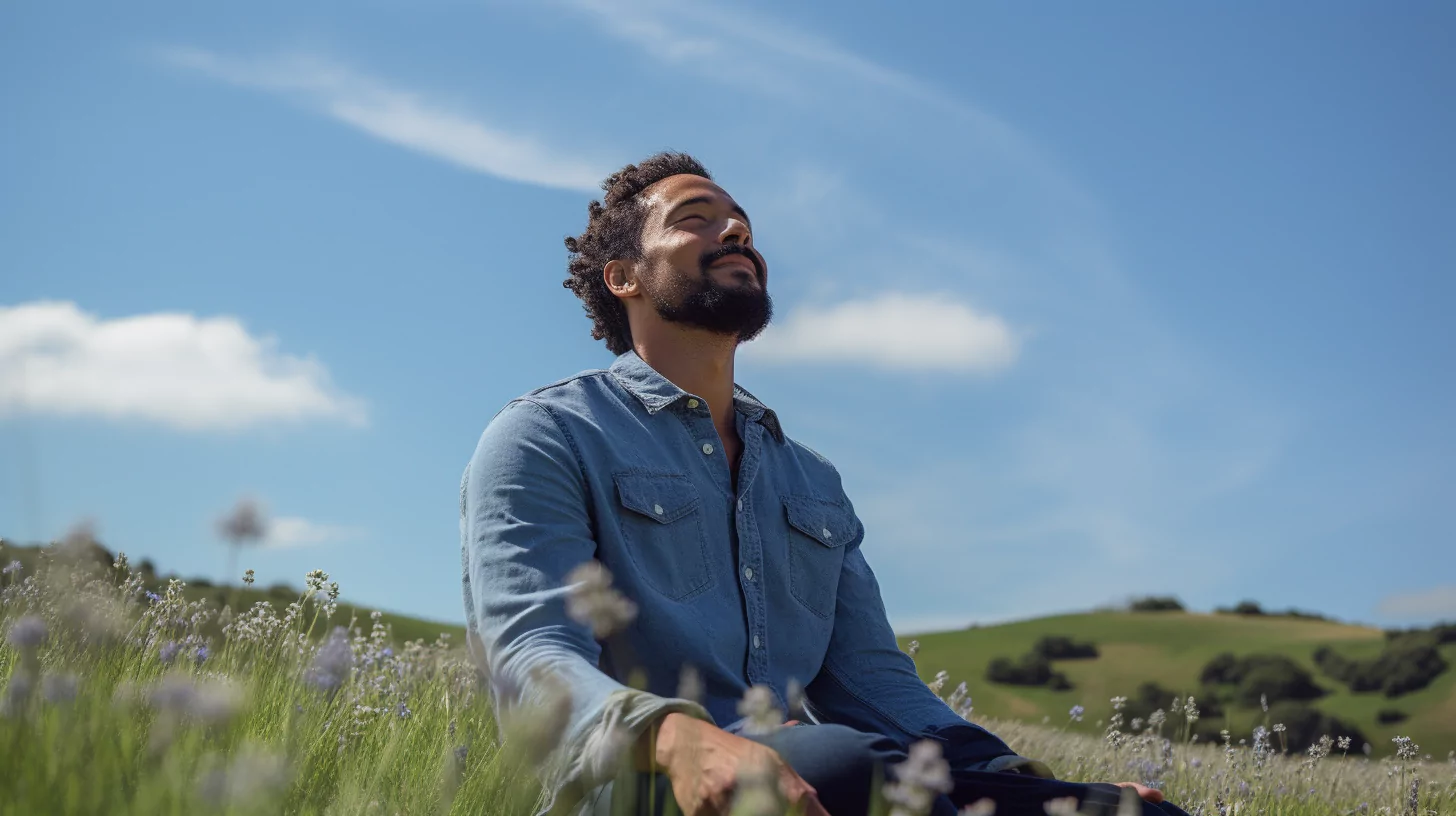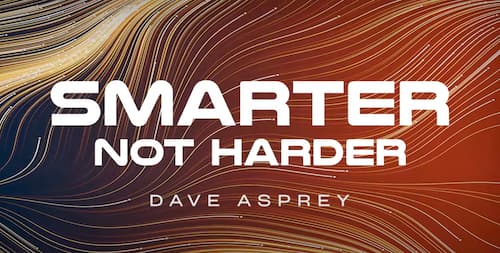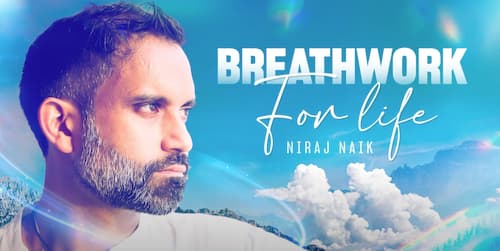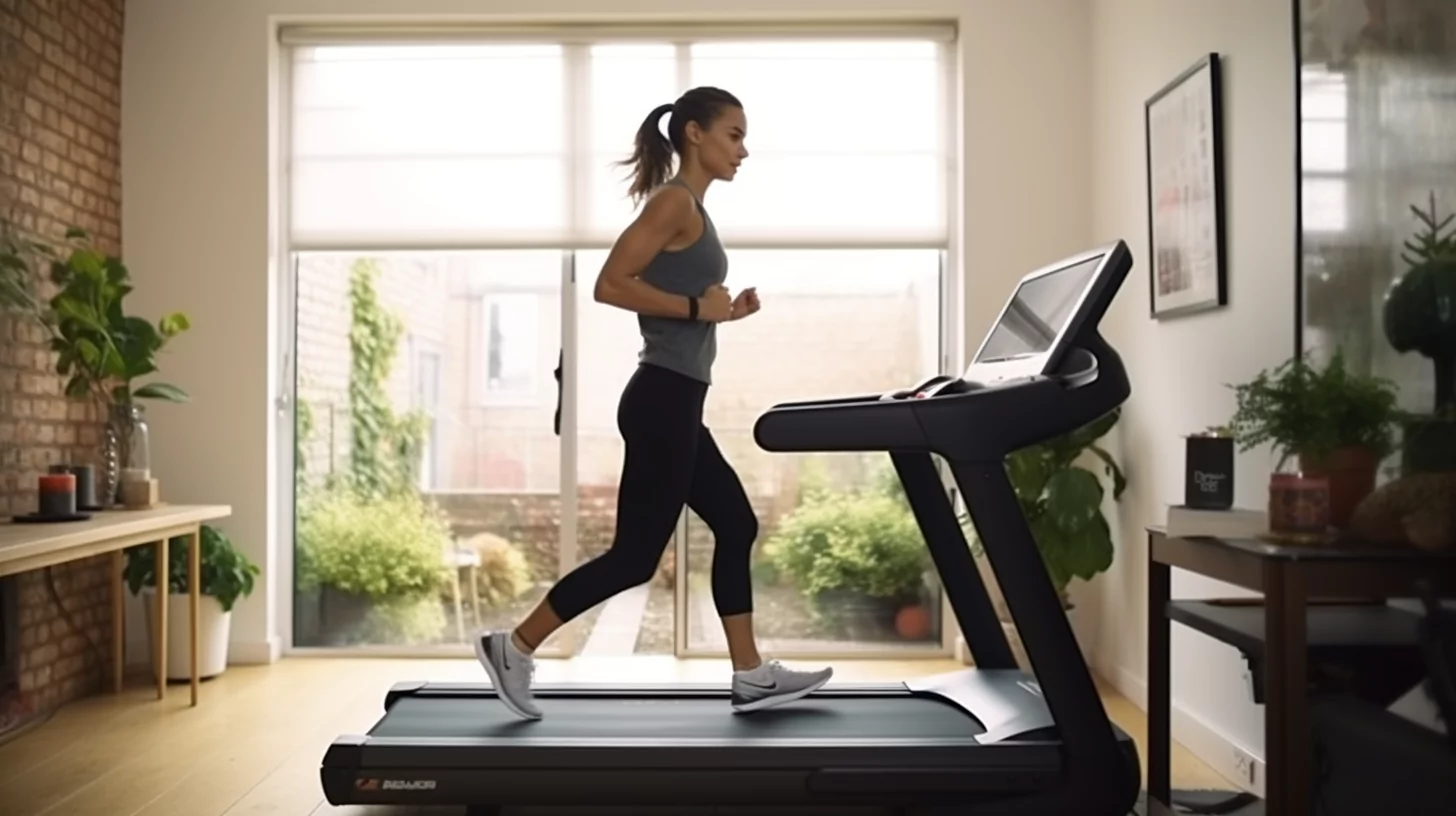Breathing. What are the chances you’ve paid attention to it?
Granted, many of us have when we’re hyperventilating or short of breath. But oftentimes, it’s so automatic that we don’t give it a second thought.
Additionally, what we also don’t give much thought to is what part of the brain controls breathing. Because why should we?
“If you stop breathing just for a few minutes, it’s over,” says Niraj Naik, the founder of SOMA Breath® and trainer of Mindvalley’s Breathwork for Life Quest. “So really, we should be paying more attention to our breath.”
The truth of the matter is, caring about it goes beyond mere curiosity—it’s about unlocking the potential to enhance your well-being, stress management, and overall quality of life.
What Part of the Brain Controls Breathing?
The brainstem controls breathing. Situated at the base of your skull, this part of the brain acts as a bridge between your brain and spinal cord. It’s made up of three main parts:
- Medulla oblongata: Sends signals through the spinal cord to automatically control your breathing muscles.
- Pons: Adjusts your breaths to be smooth by fine-tuning inhalation and exhalation.
- Midbrain: Influences breathing indirectly based on your activity level and alertness.
So out of these three, what part of the brain controls breathing rate? That would be the medulla oblongata. Its respiratory centers, which are groups of neurons, automatically control the rate and depth of breathing.
How? By sending signals to the muscles involved, such as the diaphragm and the muscles around the ribs, telling them when to contract and relax.
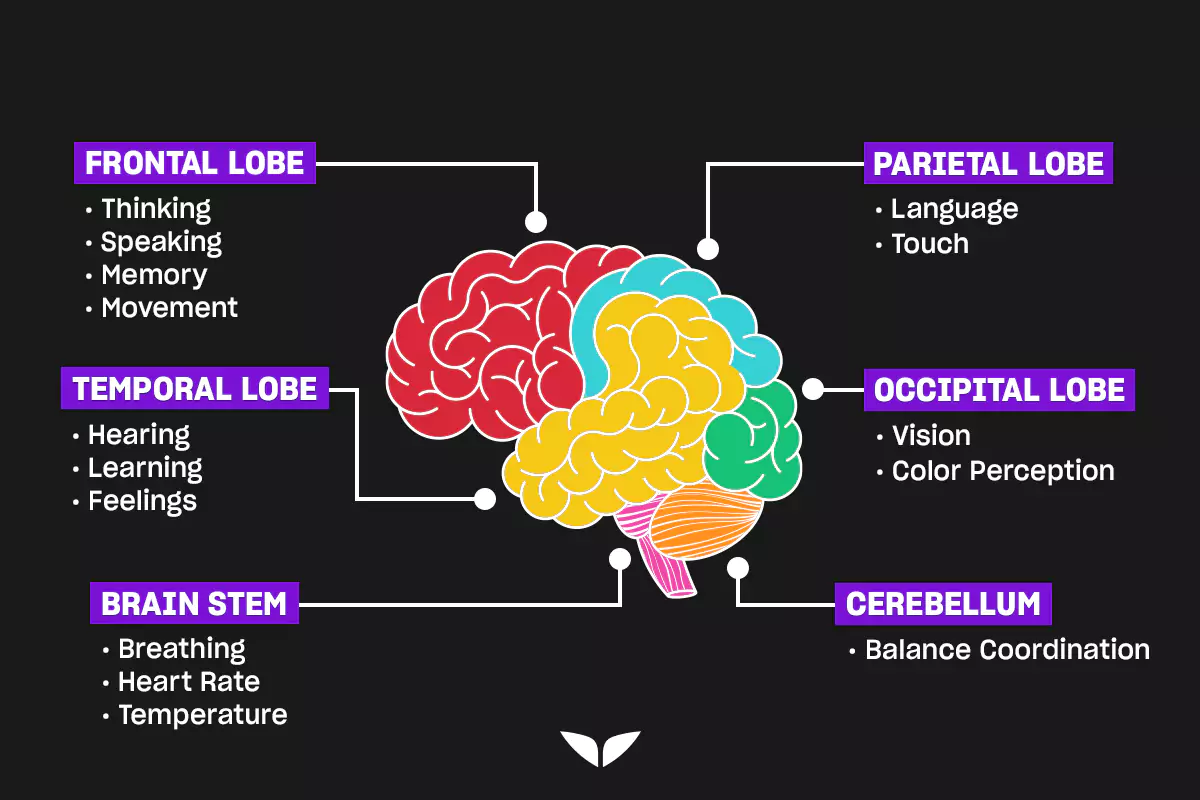
What part of the brain controls heart rate and breathing?
The responsibility of controlling not only breathing but also heart rate goes to the medulla oblongata. It houses specific groups of neurons that are dedicated to keeping your body functioning optimally.
For heart rate, there’s the cardiac center, which sends signals to speed up or slow down based on your body’s needs. Take exercise, for instance. The neurons pick up the pace to deliver more oxygen to your muscles.
The medulla oblongata doesn’t stop there. When it comes to breathing, it contains the respiratory center that ensures your lungs take in the right amount of oxygen and expel carbon dioxide efficiently.
Additionally, this particular brain region doesn’t work alone. It collaborates closely with the pons to regulate your heart rate in response to your breathing. This seamless integration ensures that when you’re faced with stress or excitement, your breathing and heart rate adjust accordingly, helping you maintain balance.
And if you ever need to, you can make conscious efforts to adjust with breathing exercises like SOMA Breath® or pranayama breathing.
Effects of Breathing On the Brain
“Breathe” is not just another commonsense piece of advice. According to research, it can have great effects on your brain health—different types of breathing can influence thoughts, moods, and behaviors.
When the breathing rate is increased, it activates the amygdala, a part of the brain that is primarily involved in emotional learning and behavior. So when you breathe rapidly and shallowly, it can trigger feelings like anxiety, anger, or fear.
On the other hand, if your breathing is slow and deep, like in meditation, it stimulates the vagus nerves, which regulate the respiratory rate. This, then, can turn off the “fight or flight” reflex and relax your brain.
Learning how to consciously control the breath is easier said than done, but it can have a number of powerful benefits. Breathing calmly may also improve your balance, ability to control your emotions, and stress levels, just to name a few.
5 Breathing Exercises for Brain Performance
Humans can go a while without food and water. But how long can you go without breathing?
“Just a few minutes,” Niraj explains.
Understanding what part of the brain controls breathing gives you a window into how your whole body functions. With this knowledge, you can actually take control of your breath. And in doing so, you can also influence your emotions and physical health in surprising ways.
Here are five simple breathing exercises you can start with:
1. Pranayama breathing
With its roots in yoga, pranayama breathing helps you control your breath to calm your mind and body. The idea is that the breathing rhythms help enhance the respiratory system, calming the mind, reducing stress, and improving concentration and overall well-being.
Best of all, it’s easy to learn. Here’s how to do it:
- Sit in a quiet place where you won’t be disturbed. Keep your back straight and relax your shoulders.
- Close your eyes. Take a deep breath in through your nose, filling your lungs fully. Notice how your belly rises.
- Slowly breathe out through your nose, emptying your lungs completely. Feel your belly fall.
- Keep this deep breathing going. Breathe in slowly, then exhale slowly. Try to make your inhale and exhale the same length.
Doing this for a few minutes each day can help you feel more relaxed and centered.
2. SOMA Breath®
Stemming from pranayama techniques, this unique breathwork focuses on regulating CO2 levels in your body to encourage proper breathing habits. What sets it apart is its use of rhythmic music, aligning your breath with the beat to achieve a state of heart coherence, where inner harmony and balance are realized.
Here’s how to do it:
- Sit comfortably in an upright position, ensuring your back is straight.
- Gently point the tip of your tongue to the back of your upper teeth, aligning it towards your third eye to enhance energy flow.
- Inhale deeply through your nostrils.
- As you exhale, produce a humming sound, directing your awareness to the buzzing sensation at the center of your forehead, the location of your third eye.
- Continue this humming for three minutes, focusing on the vibration to stimulate your third eye and enhance the practice.
- During the exercise, you can shift your focus to enhance the effect. Look towards your third eye or bring your attention to the tip of your nose while maintaining the humming sound.
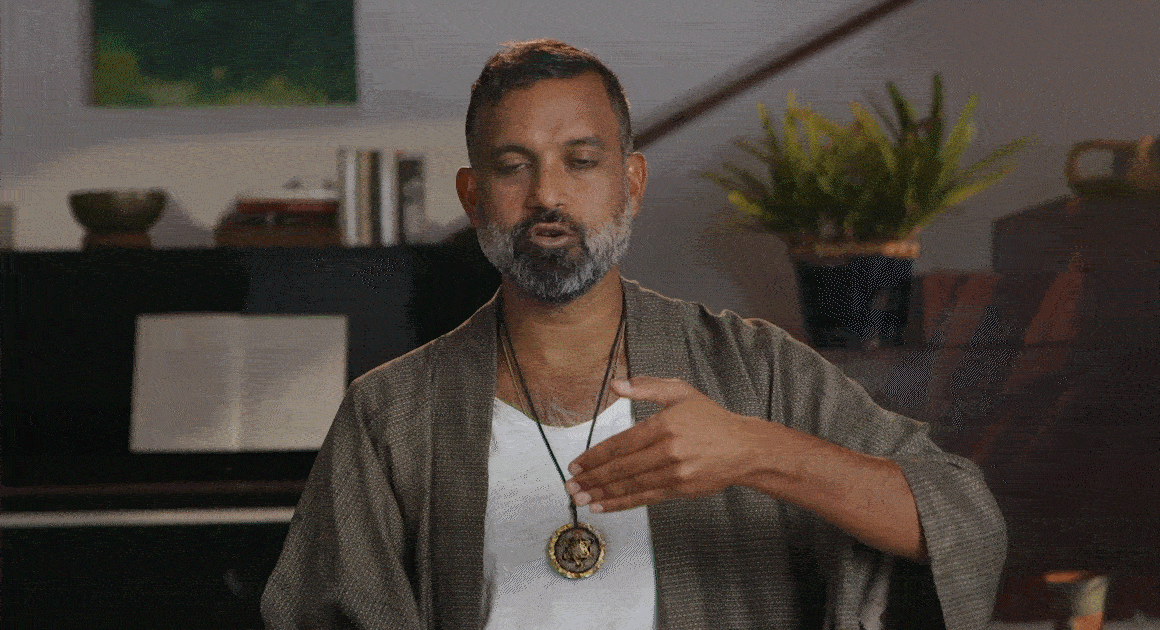
SOMA Breath® is designed to balance your nervous system, enhance focus, and awaken your inner strength. It’s perfect for a morning routine or a mid-day refresh.
3. Breathing biohacks
Juan Pablo Barahona (better known as JuanPa), a renowned transformational leader and energy master, shares a simple yet effective way to use your breath to balance your nervous system in his Ultra Presence Quest on Mindvalley. It’ll help make you feel more relaxed and present.
Here’s how you can do it:
- Start by breathing in and out through your nose very gently, so it’s almost silent.
- When you’re feeling calm, fully exhale and then pause, holding your breath.
- When you feel the urge to breathe, inhale softly without rushing. Then, exhale all the air out gently.
- When you’re ready, hold your breath again, this time a bit longer. Try to extend the hold a little more each time, up to three times.
This exercise is all about finding balance through gentle breathing. While holding your breath might seem counterintuitive, it can actually help your body switch between alertness and relaxation.
Studies have shown that slowing down your breath rate (less than 10 breaths per minute) can positively impact your nervous system. This means you can train your body to handle stress better and experience a greater sense of peace in your daily life.
4. Third Breath Biohack
The Third Breath Biohack is all about using your breath to help your nervous system chill out. It’s something you can do while walking, running, or doing any kind of movement, according to JuanPa.
Here’s how to do it:
- Walk (or do any kind of movement) naturally, breathing in and out through your nose.
- Whenever you’re ready, breathe out all your air and keep walking without taking a breath in. Feel relaxed, even with the stress of not breathing.
- Take a breath when you need to, then go back to your gentle nose breathing.
- Do it again, holding your breath out longer each time, for three rounds. Try making the last one challenging.
Doing this exercise, you’ll notice how it changes your walk and how you feel. It teaches your body to be okay with a bit of stress and then to relax again quickly. Plus, it’s a great way to boost your oxygen use and make your nervous system stronger.
5. The Wim Hof Technique
Wim Hof, also known as “The Iceman,” is a Dutch extreme athlete known for his ability to withstand freezing temperatures. His method, which he calls the Wim Hof Method, combines cold exposure, breathing techniques, and meditation.
The breathing part goes like this:
- Sit or lie down in a place where you won’t be disturbed.
- Start taking deep, short, controlled breaths. Inhale deeply through your nose, filling your lungs, and then exhale unforced through your mouth.
- Do this for about 30 cycles. (Each cycle includes a deep breath in and then letting the breath go.)
- After the last breath, exhale and hold your breath until you feel the urge to breathe again.
- Once you need to breathe again, take a deep breath in and hold it for 15 to 20 seconds.
- Exhale. This completes one round.
- Do 3 to 4 rounds.
Practicing this method can boost your immune system, improve concentration, and give you a feeling of increased energy. It’s a powerful tool to strengthen both mind and body resilience.
Futureproof Your Well-Being
Breathing may seem like the most natural thing to do, but many of us need help with doing so properly. You can, however, learn to breathe to benefit your brain.
Head over to Mindvalley and check out the Breathwork for Life Quest with Niraj Naik. This transformational leader will guide you beyond what part of the brain controls breathing to help you better understand the profound impact of it on your health, performance, and well-being.
As he says in his Quest, “If you master your breath, you can control your state. And when you control your state, you master your life.”
Welcome in.

